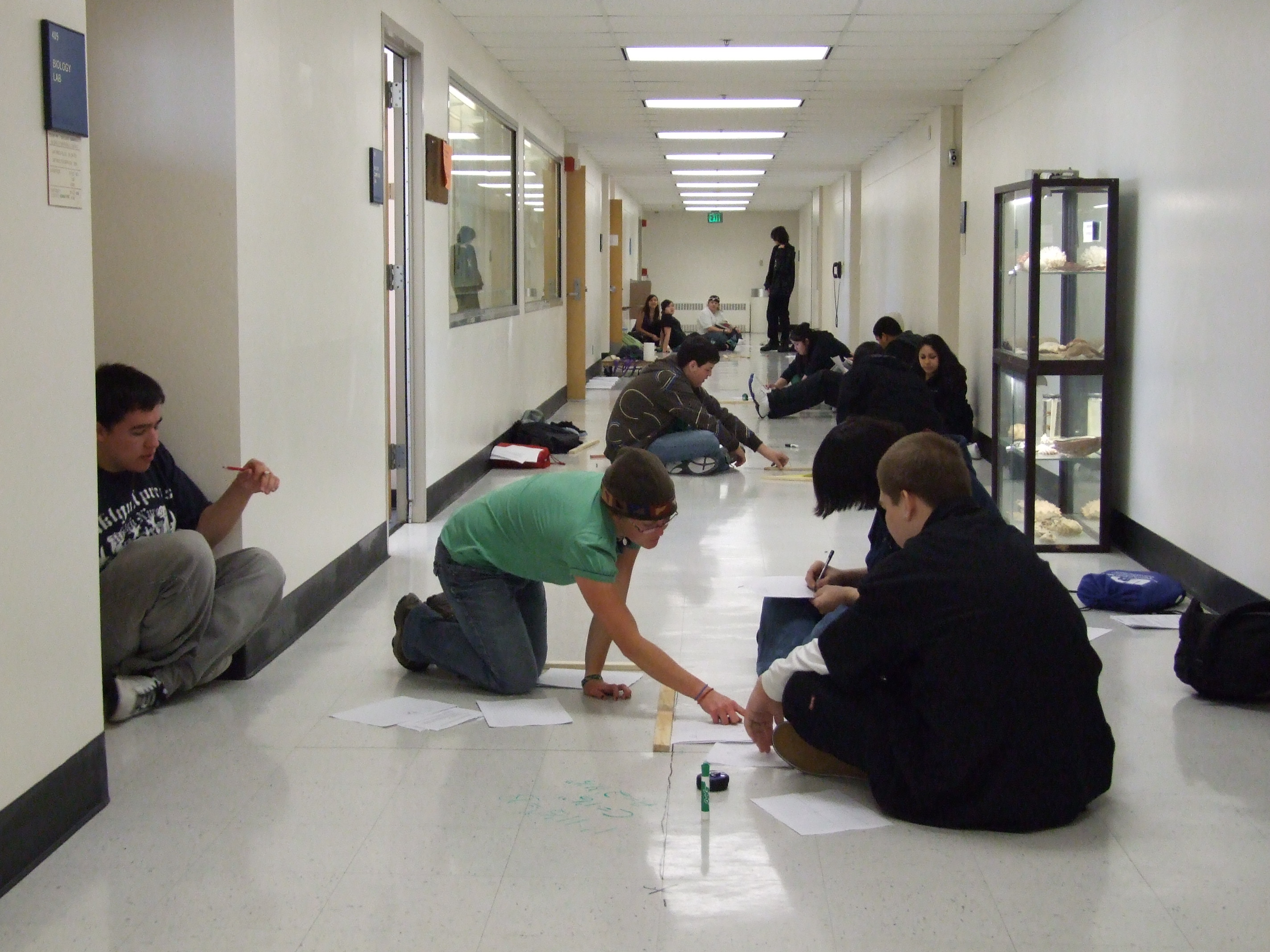
Bush Physics is a project of Dr. Daniel Solie, an education outreach professor at UAF. It is a physics class taught with lots of hands-on activities and classroom demonstrations. It is designed for students from a wide variety of educational backgrounds who are interested in learning about science and earning university credit. The pilot semester was taught in spring of 2008, and the class was offered for distance education students for the first time in spring 2009. The 2009-10 academic year will be the first time Bush Physics is offered as a full, year-long course (pending funding).
This class is loosely modeled after Alan Dick's book, Village Science, which aims to teach physics by using examples from Alaskan villages. In keeping with this theme, students use Inuktitut symbols (instead of the traditional Greek ones) to represent physical quantities, such as force and acceleration. They complete semester projects studying Alaskan problems: measuring the stopping distance of cars on ice with the brakes locked, for example, or calculating how much force is exerted while splitting firewood. Homework problems are questions they might need to answer anyway-given this sonar data, how deep is the lake? It is the goal of the class to show students how traditional Alaskan lifestyles use physics, and how physics is just a name for science they do everyday anyways.
19 of the 54 Alaskan school districts are classified as rural, and many of the rural schools have only 1 teacher[1]. This limits the choice of courses that rural students can take traditionally, but is an opportunity for distance education classes to fill in the gaps. Currently there are students from 4 different villages taking DEVS 193, in addition to students in Fairbanks. The lectures are provided via teleconference, but distance education students are expected to do the labs, assignments, and quizzes on their own. Thus the labs are designed to take about 1 hour, and the majority can be done with very little equipment. Grades, lecture notes, and photos to help with the labs are posted on blackboard for the students to access if they need to.